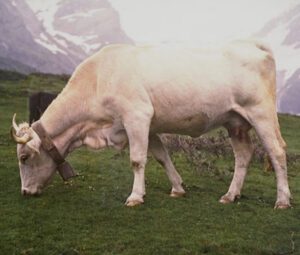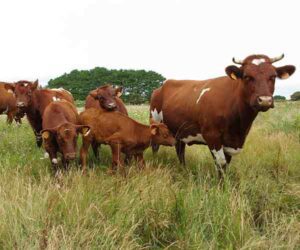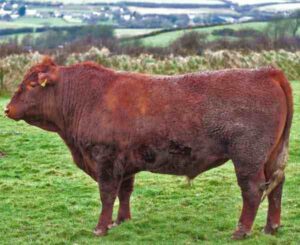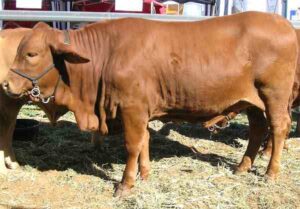The Glan cattle are a multipurpose breed of cattle which are raised for milk and meat production and also for draught purposes. It is a traditional cattle breed particularly found in the Rhineland-Palatinate region of Germany.
The breed originated from the Brown Swiss in the late 18th century. The modern type of the Glan cattle breed was established by Duke Christian IV, Count palatine of Zweibrücken through an inspection decree of 12 September 1773 that demanded the improvement of the local small red breed through using Simmental and Berne Mountain bulls.
The import of the Swiss cattle had already begun by the 1762, and that was the beginning of the Glan cattle breeding.
They began crossing with Gelbvieh in the 1920s and lately they changed the breeding aim to the draught performance one decade later.
They have been crossed with Danish Red cattle since the 1950, and that caused either the loss of beef performance or of milk performance. This was the beginning of the end of purebred Glan cattle.
The pure breed was abandoned in 1967, and the Association of the Rhenish Glan Catle Breeders closed in 1972. And an association for the Conservation and Promotion of the Glan Cattle was founded in 1984 or 1985.
There are many associations which breed Glan cattle today, with the main focus on the meat performance. Read more information about the cattle breed below.
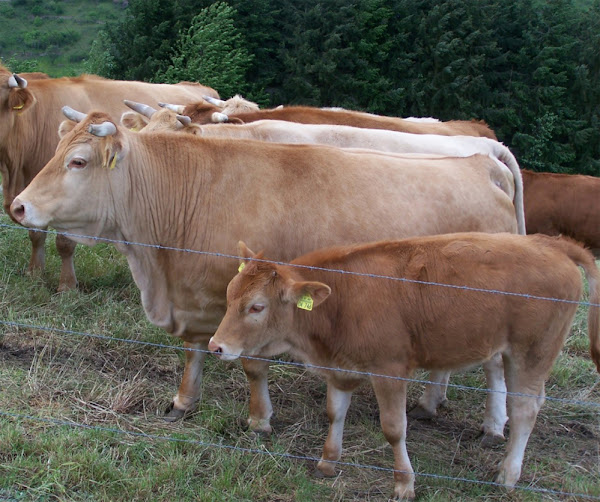
Glan Cattle Characteristics
Glan cattle are medium to large sized animals mainly with yellowish coat color. Both bulls and cows usually have small horns. Average height of the Glan bulls is around 140 to 145 cm, and 135 to 140 cm for the cows. Average live body weight of the bulls vary from 1000 to 1200 kg. And the mature cows on average weight between 600 and 750 kg. Photo and info from Wikipedia.
Uses
The Glan cattle are multipurpose animals. They are used primarily for meat production, and also for milk. The breed is also very good for draught purposes.
Special Notes
Glan cattle are strong animals and are mostly maintained in forage systems. The breed is generally a slow maturing animal, but is very suitable for keeping in extensive fattening system.
The cows are known for their milk production, and the cows on average produce about 4,446 kg of milk per lactation. Their milk is of very good quality containing about 4.07 percent of butterfat content and around 3.53 percent of protein.
The breed is also very good for meat production with about 60 percent of meat in the carcass. The breed is also very good for draught purposes. Review full breed profile of this breed in the following chart.
| Breed Name | Glan | |
| Other Name | None | |
| Breed Purpose | Milk, meat and draught | |
| Special Notes | Very hardy, active, well adapted to native climates, good milkers, grow relatively slower, good for meat, good as a draught animal | |
| Breed Size | Medium to large | |
| Bulls | 1000-1200 kg | |
| Cows | 600-750 kg | |
| Climate Tolerance | Native climates | |
| Coat Color | Generally yellowish | |
| Horned | Yes | |
| Milk Yield | Good | |
| Rarity | Common | |
| Country/Place of Origin | Germany |
